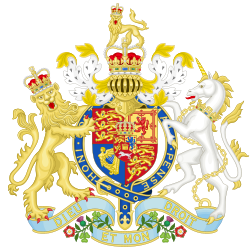| Act of Parliament | |
 | |
| Long title | An Act for Providing a Publick Reward for such Person or Persons as shall Discover the Longitude at Sea. |
|---|---|
| Citation |
|
| Dates | |
| Royal assent | 9 July 1714 |
| Commencement | 16 February 1714 [c] |
| Repealed | 8 May 1818 |
| Other legislation | |
| Amended by | |
| Repealed by | Discovery of Longitude at Sea, etc. Act 1818 |
| Relates to | |
Status: Repealed | |
| Text of statute as originally enacted | |
The Longitude Act 1714 (13 Ann. c. 14) [a] , also known as the Discovery of Longitude at Sea Act 1713, was an act of the Parliament of Great Britain passed in July 1714 at the end of the reign of Queen Anne. It established the Board of Longitude and offered monetary rewards (Longitude rewards) for anyone who could find a simple and practical method for the precise determination of a ship's longitude. The 1714 act followed by a series of other Longitude Acts that revised or replaced the original. [1]

